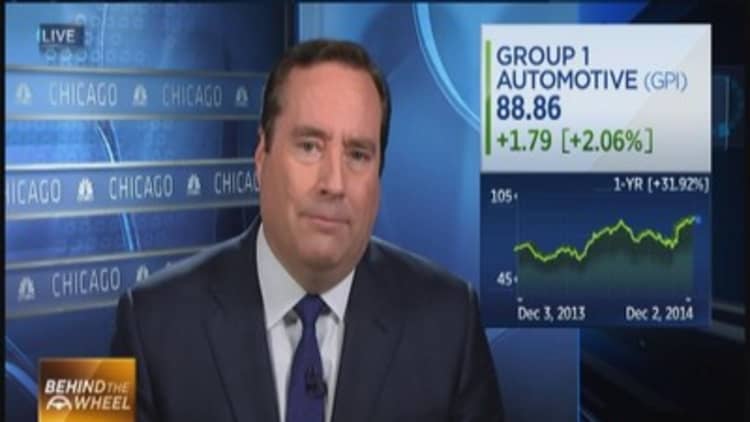As the first of Nissan's third-generation Murano crossovers roll into showrooms this month, buyers will find a lighter, more stylish and more fuel-efficient vehicle. But what only a few are likely to notice is that for the first time, the model will be made in the USA.
Nissan's assembly plant in Canton, Mississippi, has become the new global production base for the 2015 Murano. Until now, it had rolled off the line in Kyushu, Japan.
The addition of the Murano to that plant means that roughly 85 percent of the vehicles Nissan expects to sell in the U.S. next year will be produced in North America, primarily at the maker's two Southern assembly plants. That's up from just 70 percent at the beginning of the decade.
"We want to localize more of everything we do," said Pierre Loing, the head of product planning for Nissan North America.
But Nissan isn't alone. Nearly 70 percent of what Toyota sells in the U.S. is built in North America, while about 95 percent of the vehicles Honda sells here come from a network of factories in the U.S., Canada and Mexico.
Read MoreFalling gas prices not slowing hybrid production
In fact, Honda produces more automobiles in the U.S. than any other country, spokesman Steve Kinkade said, adding that the company has invested $3.5 billion in its North American production operations over the last three years.

There are a variety of reasons why the top three Japanese makers have expanded their North American operations. For one, it lowers costs. For another, it increases automakers' flexibility to shift production, reducing potential logistical and quality issues.
According to industry watchers, Nissan and its competitors were also motivated to act following the major earthquake and tsunami that struck Japan in March 2011, all but shutting down the country's auto industry for months.
More from The Detroit Bureau:
Lexus to unveil near-autonomous luxury car
Aston Martin delivers DB10 for 007 film
Takata won't expand airbag recall
Meanwhile, key production decisions were made earlier in the decade when the value of the yen rose to historic highs, and "it was not profitable to assemble vehicles in Japan," said David Sullivan, a senior automotive analyst with AutoPacific.
But it's not just the U.S. that's seeing a boom. Sullivan said Mexico's automotive production base "is on fire," noting that virtually every major global auto manufacturer is either operating, or setting up production, in the country. Mexico not only has a low cost base but is in an ideal location to supply both North and South America.
Although several external factors contributed to the shift toward North America, it's not expected to be a temporary trend. Between Mexico, Canada and the U.S., industry analysts have said they expect to see even more production shift to the region in the years ahead.
"Stability, exchange rates, and [other factors] mean we'll continue to see a shift," Sullivan said.

